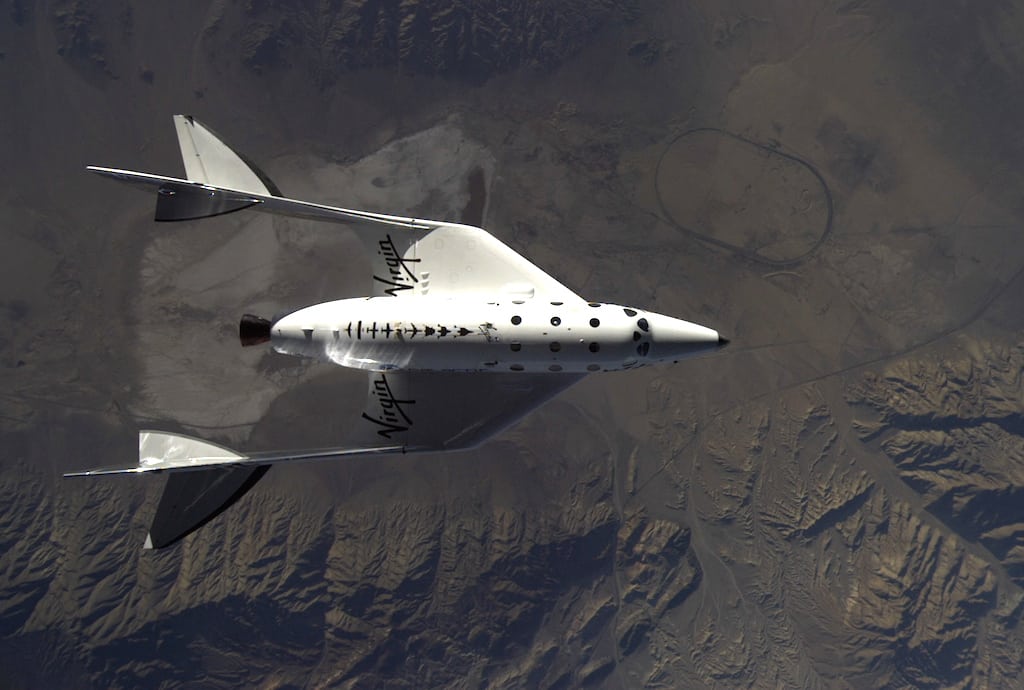Can Spaceships and Startups Attract Conventions to Albuquerque?

Skift Take
New Mexico is the birthplace of the atom bomb, the "Star Wars" missile defense system, Microsoft, and space tourism.
The City of Albuquerque and the Visit Albuquerque tourism bureau are intent on leveraging that legacy of advanced industry expertise, and building on it, to attract more national conventions involved in various high-tech sectors.
At the local level, the municipal government is attempting to integrate all of today's best practices in urban redevelopment into a long-range strategic plan to elevate New Mexico's largest city into a modern, technologically advanced business hub. That includes the construction of a new downtown "innovation district" and populating it with a growing tech startup ecosystem feeding into some of America's leading scientific research facilities.
On a national level, the tourism bureau wants to position the city as a new business travel node in the American Southwest. The goal is to bring visiting convention delegates together with advanced industry organizations operating in New Mexico, ranging from Sir Richard Branson's Virgin Galactic operations at Spaceport America to the Los Alamos National Laboratory.
Albuquerque is actually a place where a rocket scientist, a nuclear physicist, and a top-secret weapons specialist really do walk into a bar together. Now, the city wants to broker their talents more aggressively as thought leaders, consultants, speakers, and business development catalysts for national and international companies.
“We're putting together programs where people coming here for conventions can engage with someone who literally is a rocket scientist at one of the national labs,” said Gary Oppedahl, director of economic development for the City of Albuquerque. “We have thought leaders guarding the nation's nuclear secrets. People are not even aware of it, but we're on top of the biggest trends in material sciences, directed energy, and data sciences.”
The Spaceport is a huge deal from a destination marketing perspective. When Virgin Galactic's first paid flights take off from the 18,000-acre space flight facility, located 2.5 hours south of Albuquerque, the entire region is going to gain enormous exposure as the world's uncontested space tourism capital. And because the city is the primary entry point into New Mexico via Albuquerque International Sunport, that provides a new foundation for Visit Albuquerque to rebrand itself around high-tech innovation and connectivity.
"We think that Albuquerque is the cornerstone of the Spaceport America experience," Tania Armenta, president and CEO of Visit Albuquerque, told Skift. "We are the primary hub in New Mexico, and we have so many additional experiences that can be tied into the space tourism experience for visiting delegates."
Already, Visit Albuquerque, Visit Las Cruces, and Spaceport America are promoting themselves collectively at tourism and meetings industry trade shows like U.S. Travel's IPW event and IMEX America.
Spaceport is also attracting a growing contingent of partners that want to bask in space tourism's megawatt halo effect. For example, the facility announced the first-ever Spaceport America Drone Summit 2016 in partnership with DroneU last year, although it was cancelled due to a late change in FAA regulations.
Oppedahl said setbacks are inherent in anything "revolutionary" like this, but he expects to see continued growth among similar partnerships and programming around what he calls "the triad of drones, gliding, and ballooning experiences" popular throughout the state.
Innovation Central District
In order for Albuquerque to be a true destination hub for national conventions aligned with multiple advanced industry sectors, Oppedahl has been overseeing a series of major urban development projects revitalizing the downtown core, based on the Brooking Institution's Innovation District research.
Basically, the research suggests that the city of future will revolve around walkable downtown communities integrating commercial, residential, academic, startup, and cultural environments in mixed-use, high-density, high-tech, and highly connected landscapes. These innovation districts are a direct response to millennial-age knowledge professionals' desire to work in socially vibrant and creative communities.
Innovation Central is the name of the 7.2-acre innovation district earmarked in downtown Albuquerque that Oppedahl said will grow to 20 acres over the next two years. The district will be anchored by the ABQ Innovate construction project, which will house the growing number of startup companies emerging in the city.
A study by the U.S. Census Bureau in October 2015 ranked New Mexico as the 4th most successful state for startups. Today, those startups work closely with a growing batch of tech-based business accelerators including: ABQid, FatPipe ABQ, IGNITE Community Accelerator, WESST Enterprise Center, and Creative Startups.
Two years ago, there were no accelerators in Albuquerque; New Mexico wasn't known as "The Startup State;" and there weren't very many construction cranes rising over the desert.
"By the fall of 2017, the city will have completed $157 million worth of urban development projects overall, including the $23 million renovation of the Albuquerque Convention Center in 2014," Oppedahl explained. "We have a very intentional revitalization plan for the city."
In terms of connectivity and mobility, Albuquerque Mayor Richard Berry announced last week that the city is close to buying the first-ever public fleet of 60-foot, all-electric buses. They will form a new rapid transit system connecting the convention center, downtown, Old Town, and the University of New Mexico by the end of next year.
Lastly, the Albuquerque International Sunport will complete a $17 million revitalization also in 2017, following the arrival of three new carriers flying into the city, including JetBlue, Alaska Airlines, and Allegiant Air.
Altogether, the city is developing the infrastructure necessary to interest national convention organizers. But Oppedahl said that none of this works without Visit Albuquerque and the City of Albuquerque collaborating together well to attract new convention business, because the city has a long way to go to compete with established convention destinations like Phoenix, Salt Lake City, San Antonio, among others.
"It's important to match up everything happening on the entrepreneurial and business development side with how we position Albuquerque for the acquisition of more conventions," Oppedahl said. "We see tourism and economic development as two sides of the same coin."
The challenge for both sides is to take better advantage of the brainpower in the city, and brand it, and market it, and leverage it for all its worth on a national scale. According to U.S. Census Data, 14.4 percent of Albuquerque residents have a graduate or professional degree, compared to 11.4 percent nationally.
"This has been an area traditionally rich in technology and innovation," said Bill Bice, president and chairman of ABQid, in Inc. "What we haven't done a good job of, from an economic standpoint, is holding onto the value of what's been created here."
Marketing The Future
Visit Albuquerque changed its tagline from "It's a trip" to "Change your perspective" last year to emphasize the city's unique landscape and multicultural mix as two primary selling points.
"As one of our brand truths, we know what's interesting about Albuquerque is our perspective, and that is because of the geography, typography, and cultural makeup of this destination that point to perspective as a differentiator," said Armenta. "You leave feeling like a changed person."
The tourism bureau is presently developing a new website to launch in January 2017, and the "Change your perspective" is fine for the leisure market, but the messaging needs to be different for the group side. For Visit Albuquerque to differentiate itself in the convention market, the branding language has to trumpet the destination's legacy as a tech innovation powerhouse.
Monterey, California's website provides a good example here, where their tagline's emphasis on "moments" parallels Albuquerque's focus on "perspectives," but Monterey's website delineates the message between leisure and group. Monterey's tagline for the leisure side is "Grab life by the moments," while the meetings side highlights "Inspired moments in meetings."
Visit Albuquerque's marketing and communications strategy targeting convention planners should, first, highlight the state's successes in technology. Second, it should clearly define the value proposition of the Innovation Central district with a ton of content specifically around the overall user experience and the potential business synergies. And third, the website should profile destination ambassadors in both the emerging startup scene and the established scientific sectors who can partner with visiting groups.
For example, Albuquerque-based startups Plug.Solar and Cultivating Coders won their respective startup pitch competitions at the South by Southwest conference in 2015 and 2016, respectively. Likewise, before his role as the city's director of economic development, Oppedahl launched a series of tech startups, including the TriLumina laser company.
These are the types of innovators who should be profiled on Visit Albuquerque's meetings website, including bios of their careers, videos of their presentations, and testimonials from convention planners they've worked with. Hundreds more local thought leaders are available from the Sandia National Laboratory, a global leader in nuclear tech, to the new American Society of Radiologic Technologists Museum that opened last year.
"There's a lot of benefits around the saturation of the knowledge base here for the convention market, so we're re-positioning Albuquerque around those thought leaders and the incredible energy within the city right now," Armenta said. "We're capitalizing on high-tech and re-evaluating our strengths and what our convention customers need."




